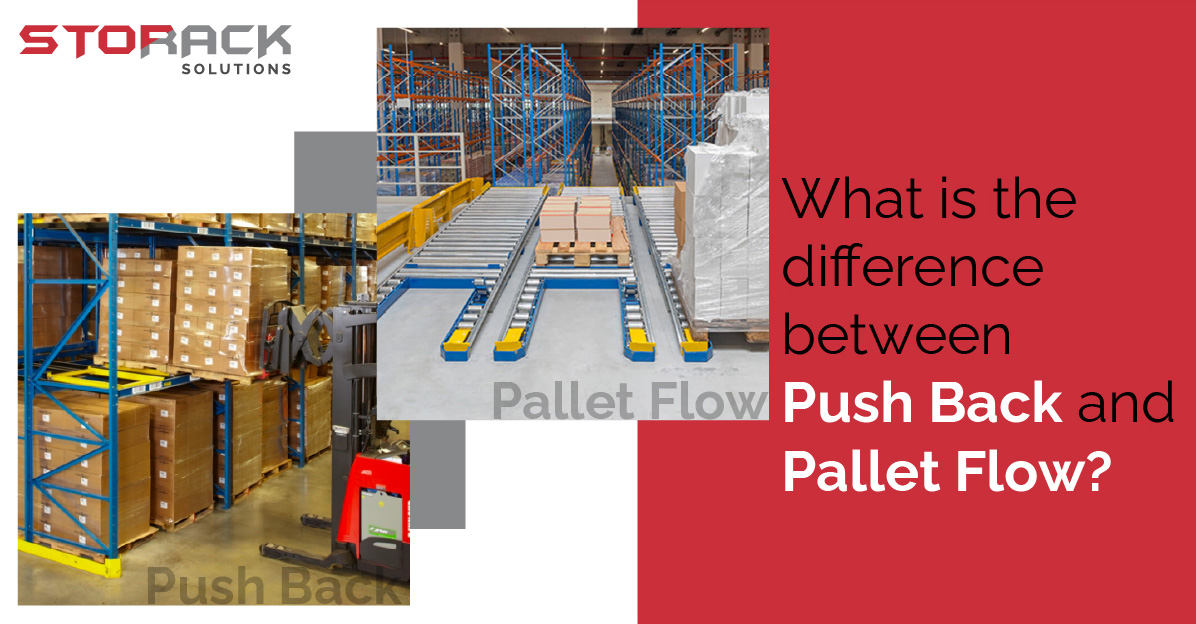
What is the Difference Between Push Back and Pallet Flow?
Pushback and pallet flow are two standard racking systems for warehouse high-density storage. Although both systems are designed to increase storage capacity, they differ in how they store and retrieve pallets.
Push Back Racking Systems
Pushback racking systems operate on a Last-In-First-Out (LIFO) basis, which means that the most recently loaded pallet will be the first to be unloaded. These systems use a series of inclined rails with wheeled carts that push the pallets back as a new pallet is loaded. When a pallet is unloaded, the pallets behind it move forward, creating a gap for loading the next pallet.
Pushback racking systems can accommodate up to six pallets deep and are ideal for storing multiple pallets of the same product. Since the system uses inclined rails, pallets are automatically positioned in the correct location, reducing the need for forklift drivers to move pallets manually. This results in faster and more efficient loading and unloading times.
Additionally, pushback racking systems require significant space between aisles to allow forklifts to maneuver and access pallets.
Pallet Flow Racking Systems
Pallet flow racking systems, on the other hand, operate on a First-In-First-Out (FIFO) basis. These systems use a series of inclined rollers or skate wheels to transport pallets from the loading end of the system to the unloading end. As pallets are loaded into the system, they move along the inclined rollers or skate wheels to the unloading end of the system. When a pallet is unloaded, the pallets behind it move forward to the unloading end of the system.
Pallet flow racking systems can accommodate up to 20 pallets deep and are ideal for storing large quantities of the same product.
Pallet flow racking systems are also highly efficient, requiring minimal space between aisles for forklifts to access pallets. However, they are more complex to install and maintain than pushback racking systems.
Critical Differences Between Push Back and Pallet Flow Racking Systems
The primary difference between pushback and pallet flow racking systems is how they store and retrieve pallets. Pushback racking systems use inclined rails to push pallets back as new pallets are loaded, while pallet flow racking systems use gravity to move pallets along inclined rollers or skate wheels. As a result, pushback racking systems operate on a LIFO basis, while pallet flow racking systems operate on a FIFO basis.
Another critical difference between pushback and pallet flow racking systems is the required space between aisles. Pushback racking systems require more space between aisles to allow forklifts to access pallets, while pallet flow racking systems require less space since they use gravity to move pallets.
Regarding maintenance, pushback racking systems are easier to maintain since they use fewer moving parts.